COVENT GARDEN |
Once the "Larder of London", now a magnet for visitors with open air stalls, street entertainers and stylish shops
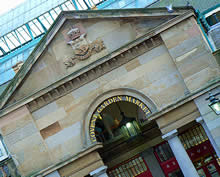
Advertisement
Commentary |
Select arrow to play/pause, bar to rewind/forward
Highlights |
Covered Market
Transport Museum
Punch & Judy Pub
Royal Opera House
Street Entertainers
St Pauls Church
Visitor Information |
The
stalls of Covent Garden are open Monday to Saturday 10am to 7pm and
Sunday 11am to 6pm. The bars and restaurants are open later.
WC Next to St Pauls church in the piazza
Scrapbook |
The open air stalls, street entertainers and stylish shops, make Covent Garden
a magnet for visitors, day and night. The central square and
surrounding pretty Victorian buildings have all been converted into one
of London’s liveliest districts. The covered piazza contains an array
of small shops and stalls selling clothes, books, arts, crafts and
antiques.
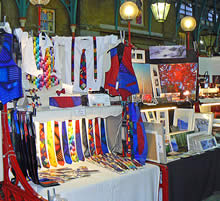
Covent Garden Stall
Covent Garden started
life as the convent of St Peter Westminster. A large kitchen garden was
maintained throughout the Middle Ages to provide its daily food and it
became a major source of fruit and vegetables in London. In 1540 King
Henry VIII dissolved the monasteries and he divided up the land between
various individuals to be privately owned. During the 17th century,
Francis Russell redeveloped his part of the land and built a central
piazza surrounded by colonnaded town houses, modelled on the classic
Italian colonial towns. The piazza was used as a market and following
the great fire of 1666, which destroyed “rival” markets in the city,
Covent Garden market became the principle market in London for fruit,
vegetables and flowers.
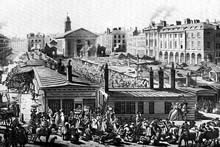
Covent Garden c1865
Source WikiMedia (PD)
Did You Know?
Covent Garden is the setting for Eliza Doolittle, the flower girl in George Bernard Shaw’s Pygmalion.
It tells the story of Henry Higgins, who makes a bet with his friend
Colonel Pickering that he can successfully pass off a Cockney flower
girl as a refined society lady by teaching her how to speak with an
upper class accent and training her in etiquette. The play was the
basis for the famous film and musical My Fair Lady
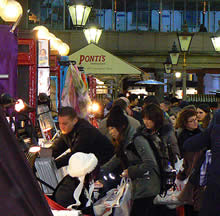
Covent Garden Today
Did You Know?
In August 2007, Covent Garden launched the first ever Food Night Market.
Fresh produce from over 35 different stalls included specialist
cheeses, mushroom sandwiches, ginger pig sausages and burnt sugar
fudge. The aim of the Night Market was to bring Covent Garden back to
its roots as the "Larder of London".
The first mention of a Punch and Judy show in Britain was recorded by diarist Samuel Pepys,
who saw such a show in Covent Garden in 1662. The exact spot is marked
by the location of the Punch & Judy pub in the market. Today,
Covent Garden is the only part of London licensed for street entertainment,
with performers having to undertake auditions and signing up to
timetabled slots. Artists charm the crowds with their humour and acts
include plate spinning, juggling, unicycle riding, ball catching, mime,
dance and acrobatics
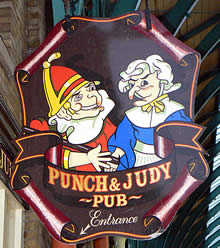
Punch and Judy Pub
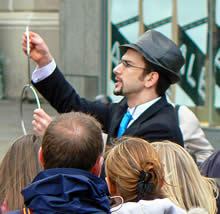
A Street Performer
Did You Know?
On the second Sunday in May, a service is held at St Paul’s church
which commemorates Punch and Judy puppet shows! There is a brass band
procession around Covent Garden, followed by puppetry performances.
Around the edge of the square you will find the Royal Opera House, the London Transport Museum, the Theatre Museum showcasing a fascinating collection of theatrical memorabilia, and St Paul’s Church, known as the “actor’s church”.
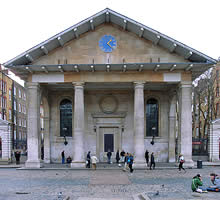
St Pauls Church, known as the actors church
Photo © Steve Cadman (CC)
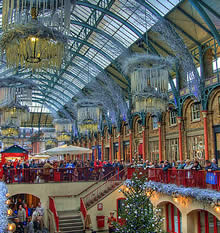
Covent Garden Piazza at Christmas time
Photo © Richard Mushet (CC)
All
logos are registered trademarks and copyright their owners. Items
marked (CC) are licenced using a Creative Commons licence by-sa. Items
marked (PD) are in the public domain and sourced from WikiMedia. All
other content is Copyright Pocket Places Ltd, unless stated otherwise.
